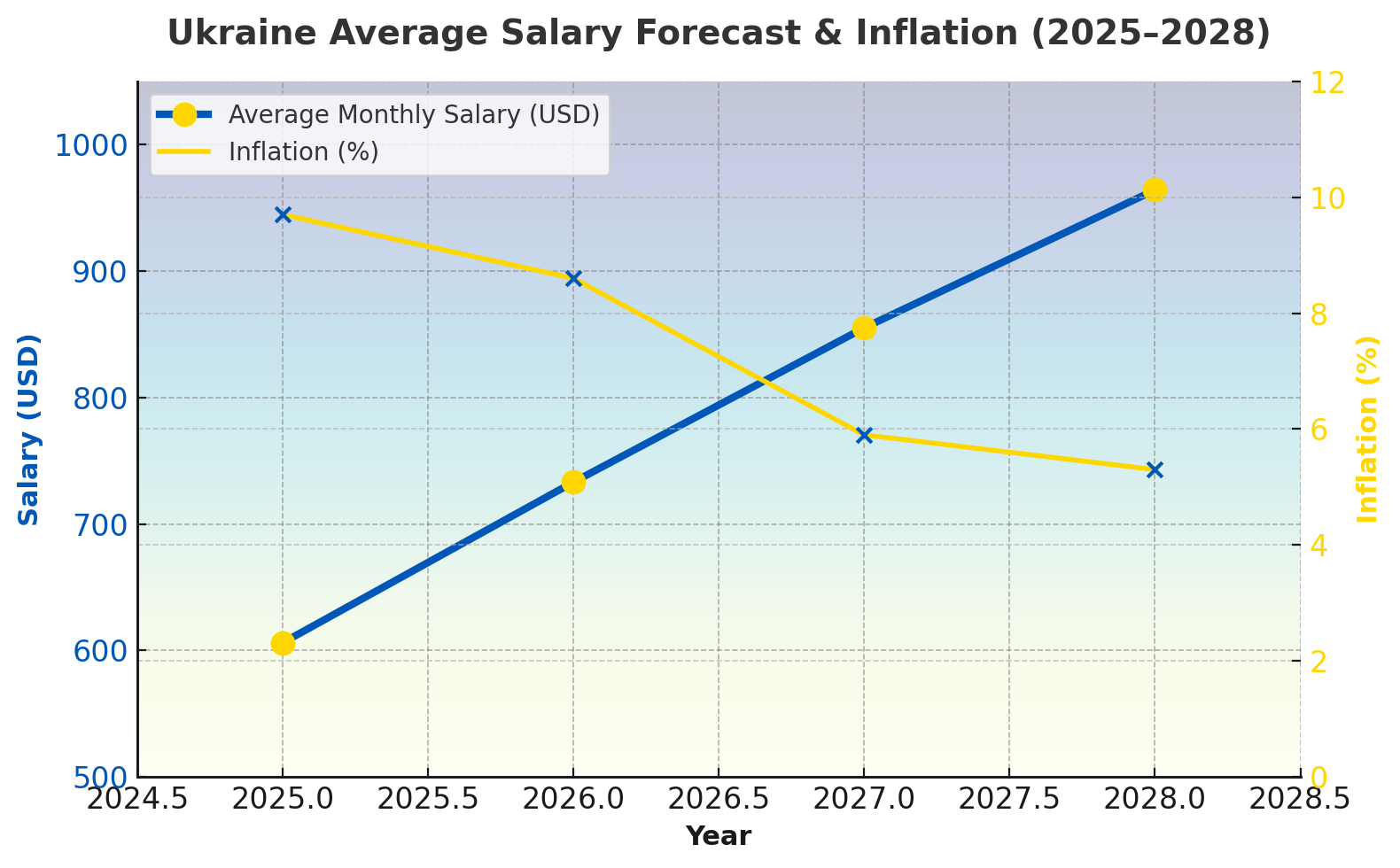Government forecasts salaries will almost double current levels, targeting international investor confidence.
Ukraine’s government projects average monthly salaries will climb to nearly UAH 40,000 ($970) by 2028, almost doubling from current levels as the country signals economic resilience.
The forecast, released in Kyiv’s official socio-economic outlook for 2026-2028, shows wages rising from UAH 25,000 ($606) this year to UAH 39,800 ($964) by 2028 — a key metric for donors and investors evaluating Ukraine’s post-war recovery potential.
The projections serve dual purposes: demonstrating Ukraine’s economic viability to international backers while setting expectations for domestic consumption growth.
A consumer base earning nearly $1,000 monthly represents a compelling investment target for Western companies eyeing Ukraine’s eventual reconstruction.
“Given the high uncertainty, the Government’s forecast estimates are close to the forecasts of the European Commission and the IMF, which indicates a shared view of the key development trends,” the government stated in its forecast.
Ukraine’s wage progression timeline shows steady growth if stability holds:
- 2025: UAH 25,000 ($606) average monthly salary
- 2026: UAH 30,200 ($733)
- 2027: UAH 35,200 ($855)
- 2028: UAH 39,800 ($964)
The government projects inflation will ease from 8.6% in 2026 to 5.3% in 2028, meaning real purchasing power should grow alongside nominal wages.
The forecast presents two scenarios based on when hostilities end. Early stabilization in 2026 versus prolonged conflict until 2027 creates significant wage differentials — potentially thousands of hryvnia difference in workers’ pockets.
The current economic situation remains harsh for many Ukrainians. Millions remain displaced, key industrial sectors face ongoing Russian strikes, and many households rely on multiple income sources or remittances to cover rising costs.
The wage projections target international audiences who are considering Ukraine’s economic future. A market of 35 million educated, digitally connected consumers earning close to $1,000 monthly represents a substantial opportunity for consumer goods, housing, and services companies.
European Commission and IMF alignment on these projections strengthens Ukraine’s case for continued financial support and private investment, showing Western institutions view the country’s economic fundamentals as sound despite wartime pressures.
Higher wages matter for Ukraine’s broader recovery strategy. Increased domestic consumption drives tax revenue, supports local businesses, and demonstrates the economy’s capacity to sustain long-term growth — key factors in maintaining international confidence.
The forecast, which depends on wage growth, reflects Ukraine’s broader argument: this economy remains viable for investment and support, with a population still earning, spending, and building for the future despite the war.
Whether these projections materialize depends heavily on military developments and sustained international backing. But the government’s confidence in publishing them sends its signal — Ukraine is planning for economic success, not just survival.




